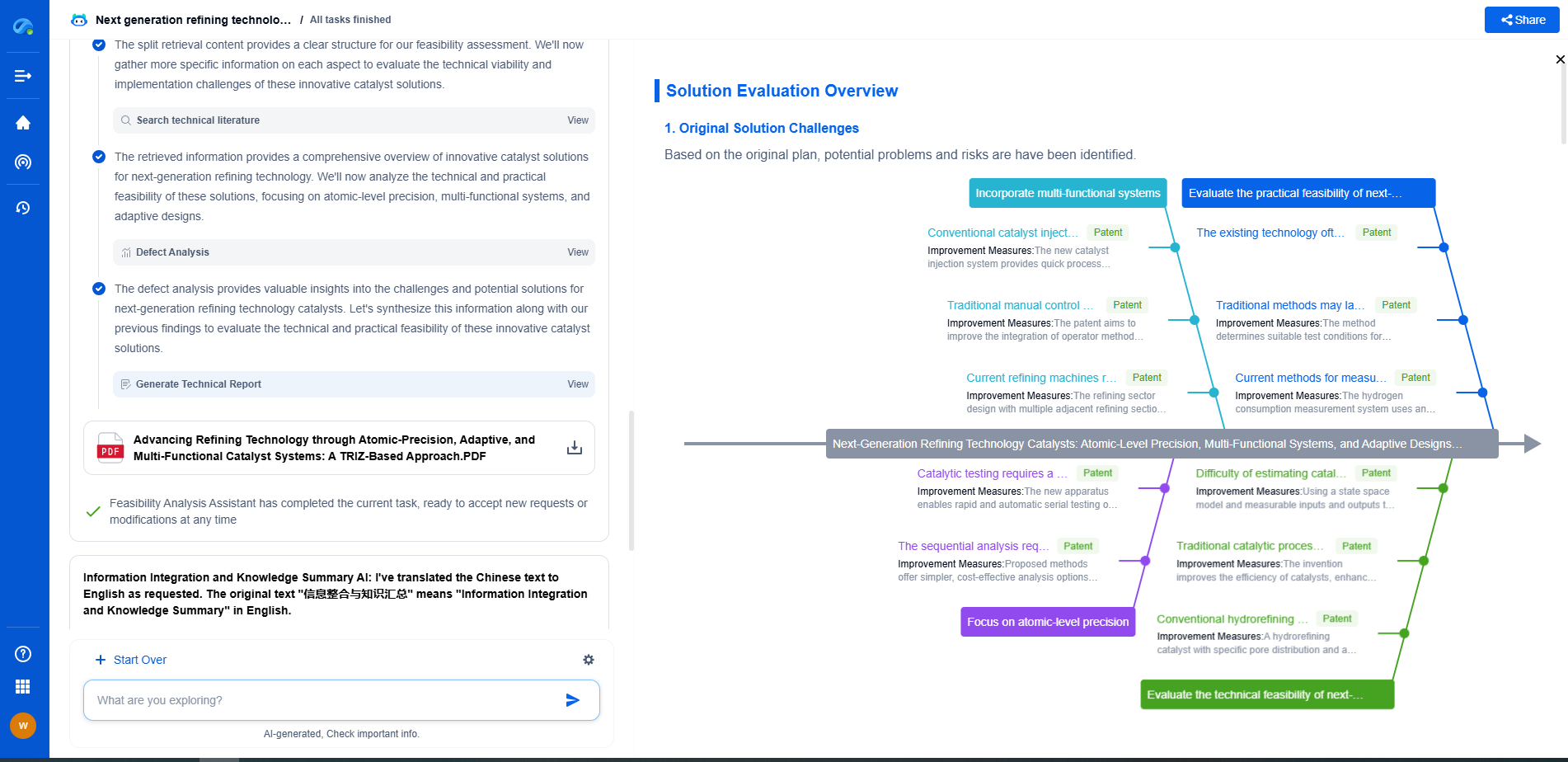What is robot repeatability vs accuracy in machining?
JUN 26, 2025 |
In the world of machining, where precision is paramount, the roles of automation and robotics have become increasingly significant. Two key concepts that often come up in discussions about robotic capabilities are repeatability and accuracy. While these terms might seem interchangeable at first glance, they refer to distinct characteristics of a robotic system. Understanding the difference between robot repeatability and accuracy is crucial for selecting the right robotic solution for specific machining tasks.
Defining Robot Repeatability
Repeatability refers to a robot’s ability to return to a specific position or follow a particular path, time and time again, under the same operating conditions. In simpler terms, it's a measure of the robot's consistency. High repeatability is essential in applications where the same task needs to be performed numerous times with minimal deviation. This is especially important in mass production environments where each component must meet identical specifications.
For instance, in a machining process that involves drilling holes in a metal sheet, repeatability ensures that each hole is drilled in exactly the same location every time. If a robot's repeatability is within a certain tolerance, the holes will always be within that tolerance, ensuring uniformity across all pieces.
Exploring Robot Accuracy
Accuracy, on the other hand, describes how closely a robot can achieve a desired position or follow a specified path. It is the measure of how well the robot reaches a target point or completes a task as directed by its programming. While repeatability focuses on consistency, accuracy emphasizes precision in reaching the intended target.
In machining, accuracy is crucial when the final product must meet stringent design specifications. If a robot is tasked with cutting intricate patterns into a piece of metal, accuracy ensures that the patterns are cut precisely as designed. Any deviation from the intended design could result in a product that fails to meet quality standards.
The Interplay Between Repeatability and Accuracy
Although they are different, repeatability and accuracy are closely related. A robot might have excellent repeatability, returning to the same position consistently, yet still lack accuracy if that position is not the correct one to begin with. Conversely, a robot that is highly accurate but lacks repeatability may achieve the correct position once but struggle to do so consistently in subsequent operations.
In practical terms, achieving both high repeatability and accuracy is often the goal in machining. However, this can be challenging due to various factors such as the complexity of the task, environmental conditions, and the inherent mechanical limitations of the robot.
Factors Affecting Repeatability and Accuracy
Several factors can influence a robot’s repeatability and accuracy in machining. Understanding these factors can help in choosing the right equipment and optimizing performance:
1. Calibration: Regular calibration of robotic systems ensures that any drift in performance is corrected, helping maintain both accuracy and repeatability.
2. Environmental Conditions: Variations in temperature, humidity, or vibrations in the working environment can affect a robot's performance. Controlled environments help mitigate these influences.
3. Mechanical Wear and Tear: Over time, mechanical components can wear, impacting both repeatability and accuracy. Regular maintenance is essential to minimize these effects.
4. Software and Control Systems: Advanced software and control systems can enhance a robot’s precision by compensating for mechanical limitations and environmental factors.
The Importance of Choosing the Right Robotic System
Selecting the appropriate robotic system for machining tasks involves a careful evaluation of the desired specifications for repeatability and accuracy. Not all applications require high levels of both. For instance, tasks that involve repetitive, simple movements may prioritize repeatability, while tasks requiring intricate designs might focus on accuracy.
Ultimately, understanding the specific requirements of the machining process and the capabilities of different robotic systems enables manufacturers to make informed decisions, optimizing productivity and product quality.
In conclusion, while robot repeatability and accuracy are distinct concepts, both play crucial roles in the field of machining. Recognizing the differences and the interplay between these two characteristics can lead to better implementation of robotic systems, resulting in enhanced manufacturing precision and efficiency.
Ready to Redefine Your Robotics R&D Workflow?
Whether you're designing next-generation robotic arms, optimizing manipulator kinematics, or mining patent data for innovation insights, Patsnap Eureka, our cutting-edge AI assistant, is built for R&D and IP professionals in high-tech industries, is built to accelerate every step of your journey.
No more getting buried in thousands of documents or wasting time on repetitive technical analysis. Our AI Agent helps R&D and IP teams in high-tech enterprises save hundreds of hours, reduce risk of oversight, and move from concept to prototype faster than ever before.
👉 Experience how AI can revolutionize your robotics innovation cycle. Explore Patsnap Eureka today and see the difference.
- R&D
- Intellectual Property
- Life Sciences
- Materials
- Tech Scout
- Unparalleled Data Quality
- Higher Quality Content
- 60% Fewer Hallucinations
Browse by: Latest US Patents, China's latest patents, Technical Efficacy Thesaurus, Application Domain, Technology Topic, Popular Technical Reports.
© 2025 PatSnap. All rights reserved.Legal|Privacy policy|Modern Slavery Act Transparency Statement|Sitemap|About US| Contact US: help@patsnap.com

